Recent Posts
-
Yes, There IS a Future!
December 26, 2025
-
Real Crimes and the Coming Violence
September 6, 2025
-
Whither Modern Life?
June 27, 2025
-
What the Hell
June 18, 2025
-
As Darkness Engulfs Us
April 6, 2025
-
AI, Risk, and Work
January 17, 2025
-
“Things Are in the Saddle, and Ride Mankind”
December 29, 2024
-
Forgotten Futures in Seattle
December 12, 2024
-
Autocracy Defeats Neoliberalism
November 14, 2024
-
History… We’re Soaking in It!
October 2, 2024
|
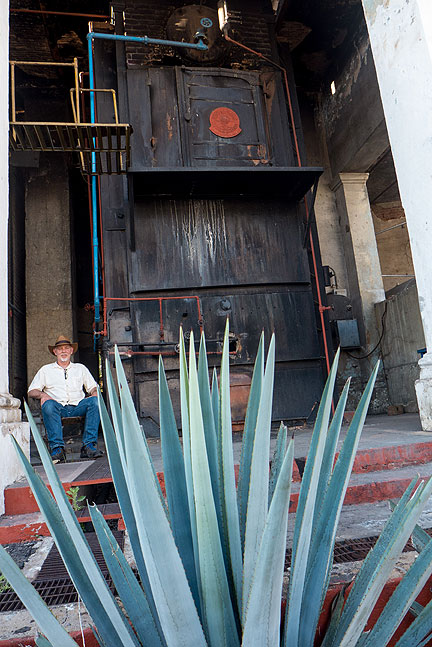 Early 20th century Babcock and Wilcox boiler at the La Martineña tequilaria. We were able to wander around freely through the facilities, which weren’t in use at this time of the year.
This is a photo essay, the last from our recent journey to Mexico, covering Tequila, a UNESCO Heritage site in the state of Jalisco between Guadalajara and Puerto Vallarta. The town sits in a valley, surrounded with beautiful hills. It’s an old historic place, with two centuries of tequila making under its belt. The famous brands, Jose Cuervo (the crow), and Sauza, both have major facilities tricked out for tourist visits. But what we really loved was the hundred-year-old tequilarias that still fill the back streets along the Atizcua River that runs through the town.
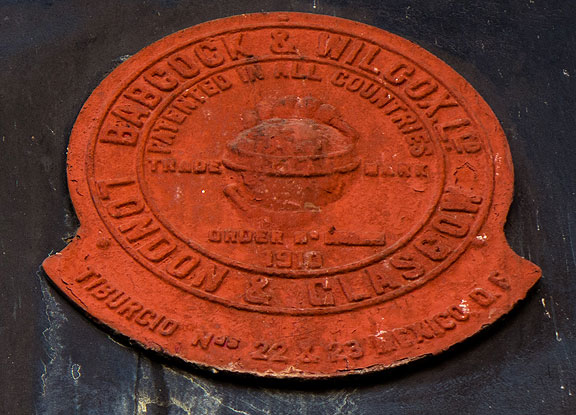 Close-up on the boiler’s provenance. 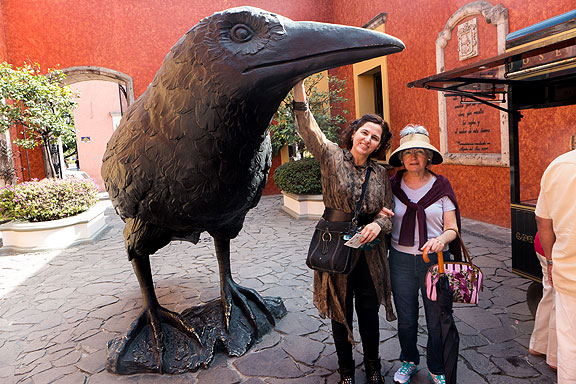 Adriana and her mom under the “cuervo” at Jose Cuervo’s fancy-schmantz tequila factory and tourist center (rather Disney-ish, actually). 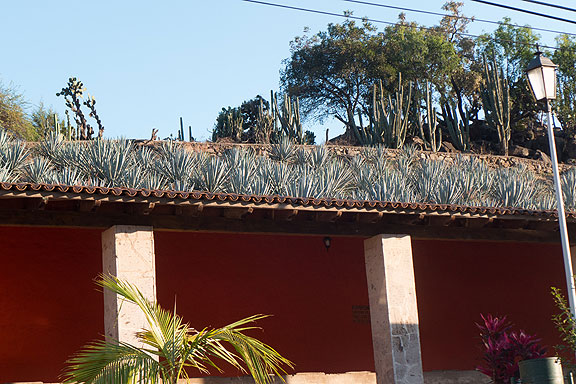 Here’s a bunch of the agave plants that are the source of tequila growing above the old laundry washing area in the heart of the old part of town. 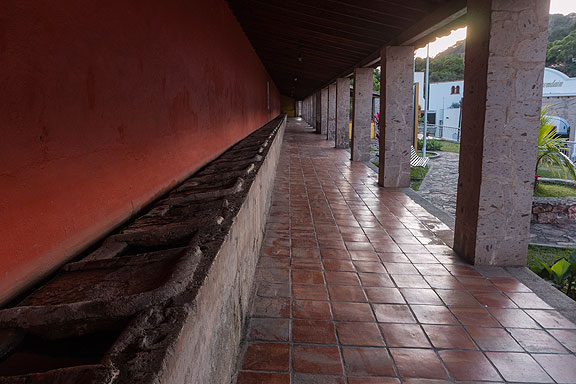 Here’s the 82 laundry stations where the town’s laundry was done for more than a century, prior to better plumbing. 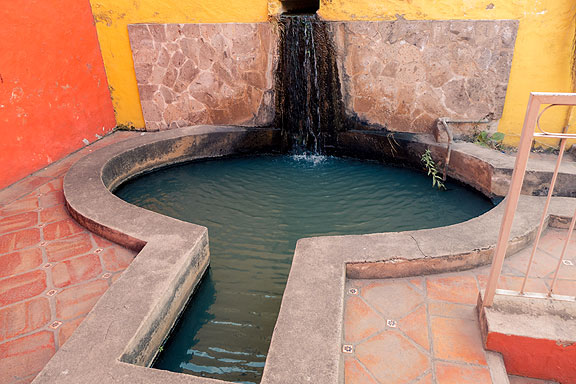 This is a spring adjacent to the laundry zone, still flourishing. 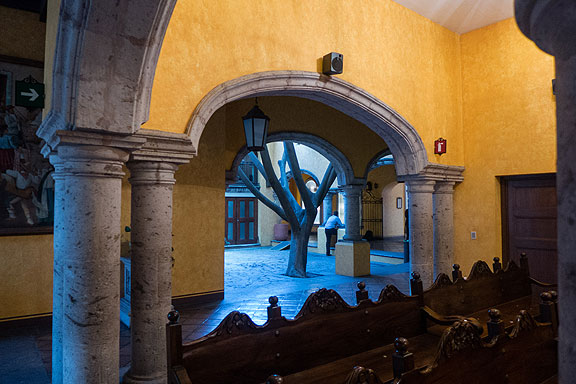 Inside the Cuervo facility I did come upon this eerily beautiful view from their chapel towards a blue courtyard. 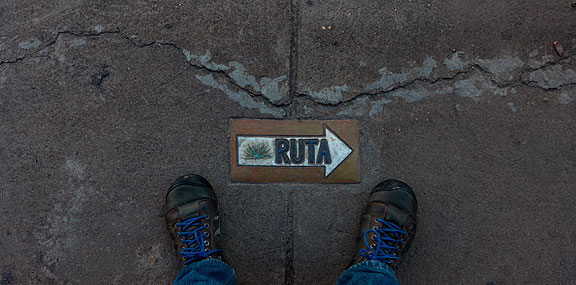 We followed the tequila route to the older facilities upstream from the tourist-ified centro. Continue reading Tequila!
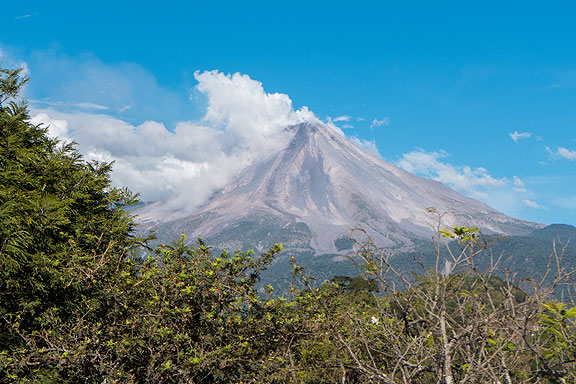 This is the view of the Volcan de Colima from the deck of Jacal de San Antonio, a fantastic restaurant full of outdoor decks and amazing views to the volcano and towards the ocean too… After three wonderful days in Ciudad Guzman, we went further south to visit Alejandra and her kids in Colima. It’s a drop from the valley where Guzman is to Colima, and the weather is much warmer as we approached the long descent to the Pacific Ocean. Spectacularly, the Volcán de Colima was very clear and very active while we were there. The big fumarola we’d seen in the sky in Ciudad Guzman was just one of many regular emissions pumping out of the depths of the earth through the top of this gorgeous volcano. The volcano is clearly visible from Colima (when it’s not shrouded in clouds or fog) so we were delighted with the ever-changing light and the burbling lava flows and steam/ash clouds. It was hard to pay attention to much of anything else some of the time!
Ale has opened a new pastry shop with her friend Isa, and we spent an afternoon helping them test some Rosca de Reyes recipes, and generally put ourselves at their disposal as kitchen helpers. It was fun!
 We only put the decorations on it, but we did our best to be helpful! 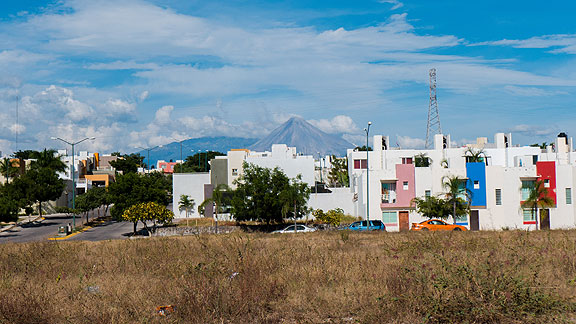 We drove north out of Colima past these modern housing projects, but with our thoughts on the volcano looming in the distance. I am going to put a couple of satellite shots here, so you can see clearly where this is. The first is closer, with the Volcano, and the Nevado de Colima just north of it (the dormant volcano we visited from Ciudad Guzman). You can also see the valley in which C. Guzman sits, the Laguna de Zapotlan, and the relationship of the city of Colima (at southern edge) to the nearby pueblo of Comala (some shots from there coming).
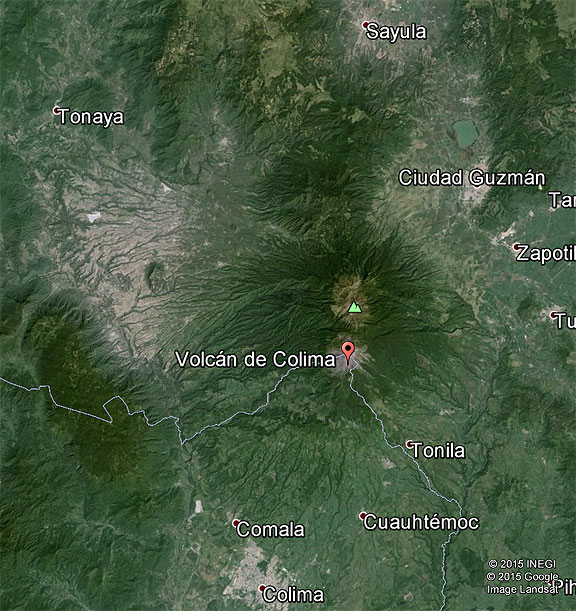 At the north is Sayula where we went for dinner and to buy knives. You can see the national park around the Nevado de Colima, and then the active volcano just south of there… further south is Comala, and then Colima. Continue reading Lunch with the Volcano
This is basically a brief travelogue, based on our holiday trip to visit Adriana’s family in Guadalajara. After New Year’s we went to visit one sister in Ciudad Guzman, and another in Colima. Today’s photo essay is from Ciudad Guzman, which I’d only heard bad things about before we went. People in both Guadalajara and Colima tend to speak very disparagingly about C. Guzman, making it sound like some kind of hellhole. But let me say for the record, quoting my sister-in-law Celia: Guzman rocks!
 We enjoyed this amazing sunset over the Nevado de Colima, which you can see pretty clearly here is a long dormant volcano, last explosion 220,000 years ago. In the foreground buses at the local station, and a tiny circus tent. We stayed with Celia and Andres at their Hotel Fuerte Real, a brand new, spotlessly maintained place a short distance from the historic train station. They will soon be building their new home in a nearby neighborhood, but for now they’re living in the hotel too. We were very comfortable there. On our second morning as we strolled across the parking lot to have breakfast we looked at the sky and saw a very weird cloud. I wish I’d taken a photo, but it was dense, dark gray, shaped like a christmas tree on its side, and we just shrugged it off as an anomaly (even though one of the hotel’s maids was standing and staring at it too). After breakfast we went back to the room and were covered in light ash falling, almost like a snowfall. The cloud had been belched out by the Volcán de Colima, a very active volcano which I will post photos of in the next entry.
Celia gave us a great tour on our arrival, first taking us to see the Laguna de Zapotlan, an impressively large freshwater lake that fills a corner of the sprawling agricultural valley. One of our strongest feelings after visiting was a sense of urgency that some good urban planners and motivated eco-activists would band together to make intelligent greenbelts and delimit the urbanization process before it overruns this beautiful valley.
 This is a causeway built to accommodate rowing events on the Laguna de Zapotlan in the recently held Panamerican Games. 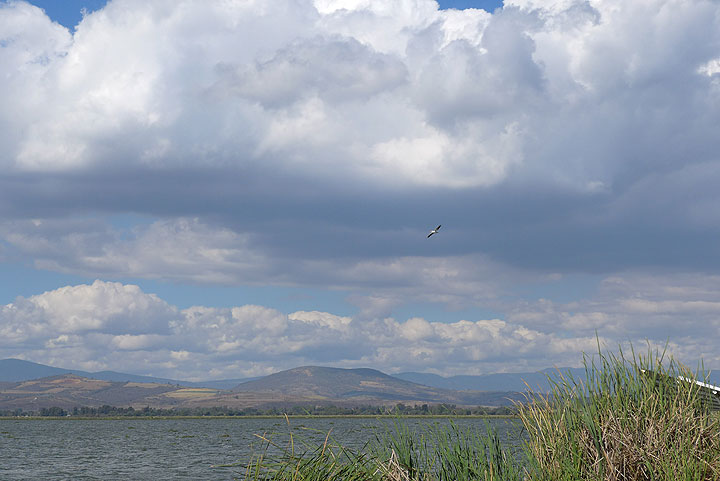 It’s a gorgeous lake, with lots of bird life too. 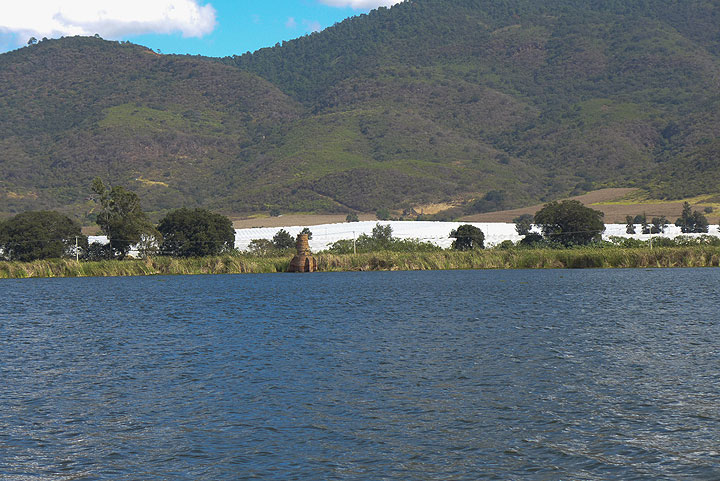 Not far off the edge of the lake are some of the hothouses that are replacing the traditional corn-and-cattle economy with a berry and avocado export agriculture. Continue reading Ciudad Guzman: An Unheralded Mexican Gem
|
Hidden San Francisco 2nd EDITION!

NEW 2nd EDITION NOW AVAILABLE!
Buy one here
(Pluto Press, Spring 2025)
|



























